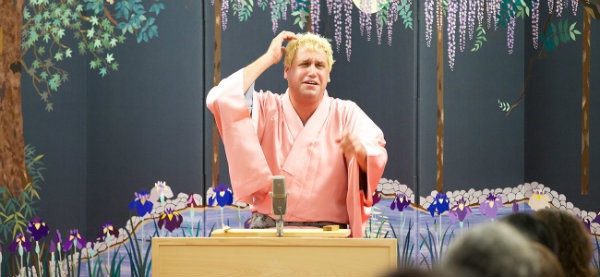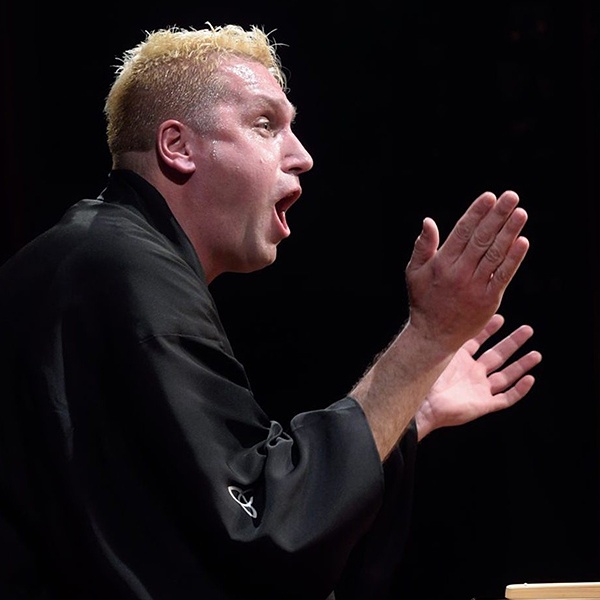5 Amazing Things to Experience in Ise
I lived in Ise for three years and did a series of videos produced by the Ise City Council introducing this fascinating city (in Japanese with English subtitles). Here are five videos introducing aspects of Ise that were really close to home—literally and figuratively! Be sure you don't miss out!
By Katsura Sunshine1. Ise Kawasaki Merchant Museum
https://www.youtube.com/watch?v=lENLNCCzczA&feature=youtu.be
I lived next door to this museum and performed in their renovated warehouse.
The area of Ise called Kawasaki is largely preserved from 100-plus years ago. It was a merchant area built around a river. Rice, food and sake would be delivered by boat from other parts of Japan, loaded straight from boat to warehouse, and then delivered in turn to all the shops and eateries that served the thousands of pilgrims to Ise Grand Shrine.
The most fascinating part of this museum for me is the 400-year-old paper money—the first paper money in Japan. Pilgrims would come from all over Japan with gold coins, but the minute they bought something small in Ise, they would be loaded with the heavy coins that made up the change. This paper money was light, and only considered legal tender in Ise. When it was time to go home, you could change the notes back into coins.
2. Asahiyu Salt Water Public Bath
https://www.youtube.com/watch?v=J2Q-IGsWrL8&feature=youtu.be
A five-minute walk from my place in Kawasaki brings me to a really unique public bath. The owner takes his truck 20 minutes away to a place called Futami to pump up liters and liters of salt water, and then pours it into his public bath for patrons to bathe in.
The reason is fascinating: He found an old woodblock print that depicted pilgrims having a ritual bath in the sea at Futami before they finished the journey to Ise Grand Shrine. It seems it was a tradition to cleanse oneself in salt water before entering the shrine grounds.
I tried the bath myself—and I did indeed feel a little bit purified…
3. White Rock Carrying Ritual
https://www.youtube.com/watch?v=4QY38WI-aOs&feature=youtu.be
One of the most incredible aspects of Ise Grand Shrine is that once every 20 years they build an exact copy of the present shrine right beside the original, “move” the god into the new shrine and destroy the previous one. The city begins preparing for this over a decade in advance.
I was fortunate enough to live in Ise for this time. One important ongoing ritual is the carrying of the white rocks, a ritual called oshiraishi-mochi. Rocks are collected from the riverside and polished clean. Then, neighborhood by neighborhood, over the span of months, the rocks are collected in a carriage and a whole day is spent using ropes to drag this carriage from your neighborhood to the shrine, all with a great festival atmosphere.
Once we arrive, we each take one rock and place it in the inner shrine—the only time in 20 years regular people are allowed to enter this space, because the god is not yet housed there. You can see the continuation here.
https://www.youtube.com/watch?v=XCM23uE2Nv0&feature=youtu.be
In one version of this ritual, the carriage is replaced by a boat and dragged down a river, as you can see above! You can see the continuation here.
4. Ise Udon
https://www.youtube.com/watch?v=AzSXOAmKQvs&feature=youtu.be
One of the most famous dishes with the name “Ise” attached to it is the noodle dish “Ise Udon.” The noodles are prepared extra soft, and there's very little soup, though what there is is very intense in flavor. This way of preparing udon is quite different from anywhere else in Japan—and this, like so many other aspects of Ise, has its roots in the region's historical pilgrimages.
Pilgrims spent days and even weeks traveling from all over Japan on foot, and arrived in Ise tired and spent. The soft noodles are thought to be easy on the stomach, and the small amount of “soup”—more like a sauce—can be consumed more quickly than a full bowl of hot soup with noodles, so this apparently catered to the pilgrims’ need for a quick meal before moving on with their travels.
So here in Ise you have not only the original paper money, but also the original fast food to spend it on!
The Ise Udon shop called Tsutaya is one of the most famous, and it's a seven-second walk from my place in Kawasaki. Now that is convenient!
5. Changing the Rope at the Wedded Rocks
https://www.youtube.com/watch?v=OshXSQPSxTw&feature=youtu.be
One of the symbols of Mie Prefecture is a beautiful pair of rocks in the sea in Futami, Ise, that are bound by a giant shimenawa rope.
In Japan there's a symbol of a rope or cord that binds people, called go-en. It's difficult to translate directly into English, but refers to the tie between people rooted in destiny. When people meet in Japan and they feel a special bond, like their meeting was predestined, or happened for a reason, they often invoke this image. This is not only in romantic relationships, but permeates society—I’ve used it a lot even in fortuitous business relationships.
The Wedded Rocks, or Meoto Iwa, are a visual representation of go-en, and this video shows the ceremony where this giant rope (it really is huge) gets changed three times a year.

http://katsurasunshine.com/en/



